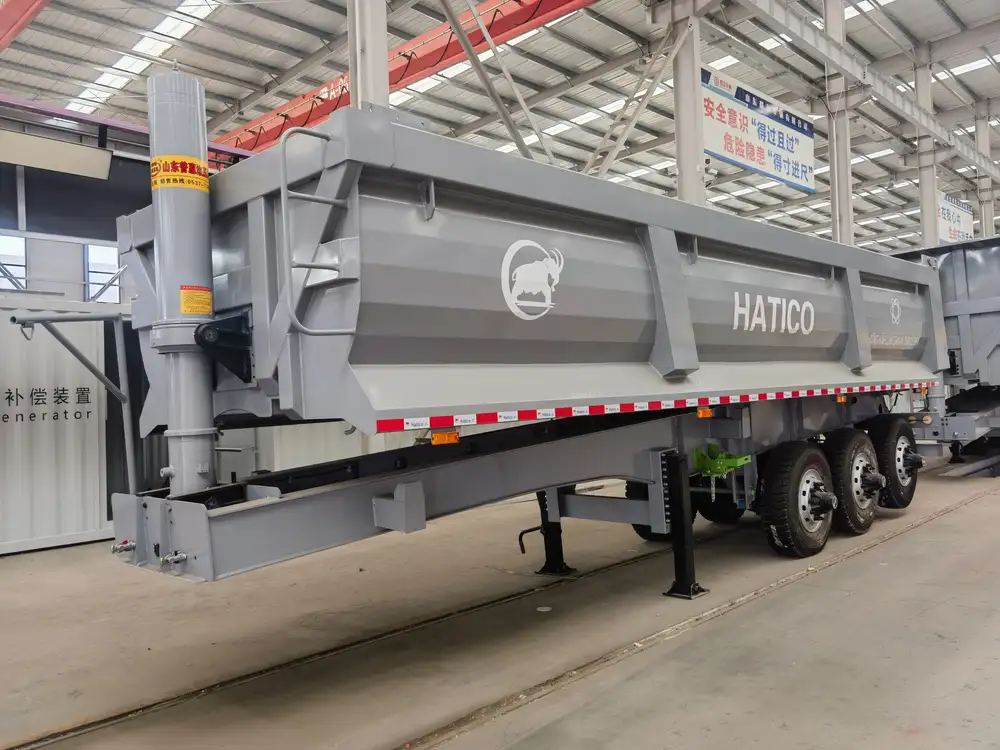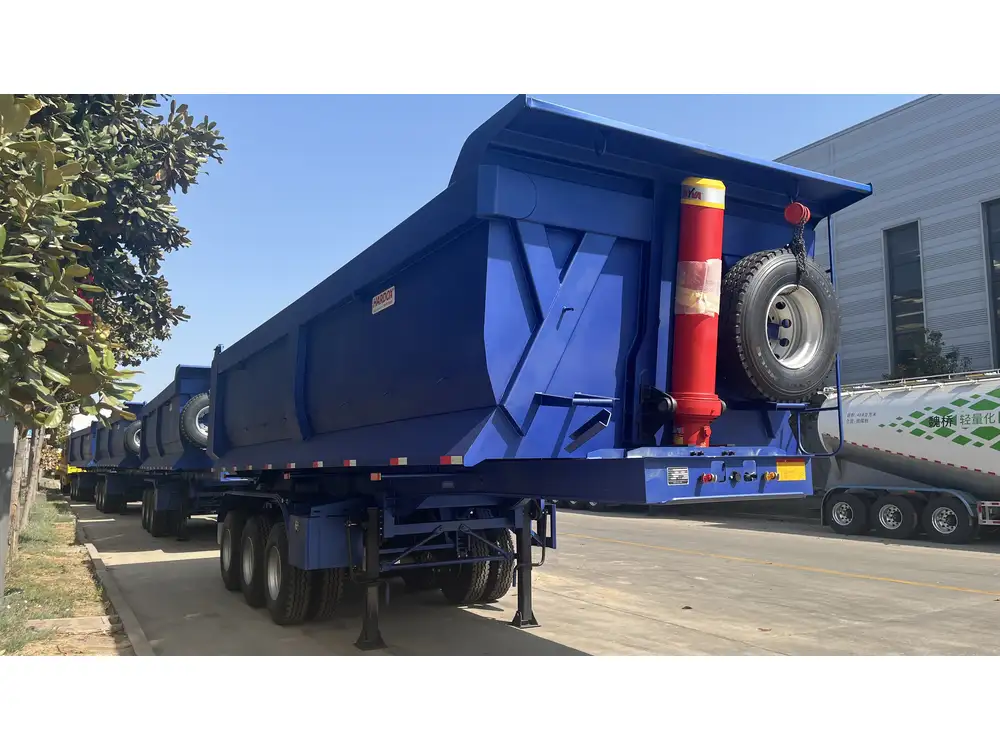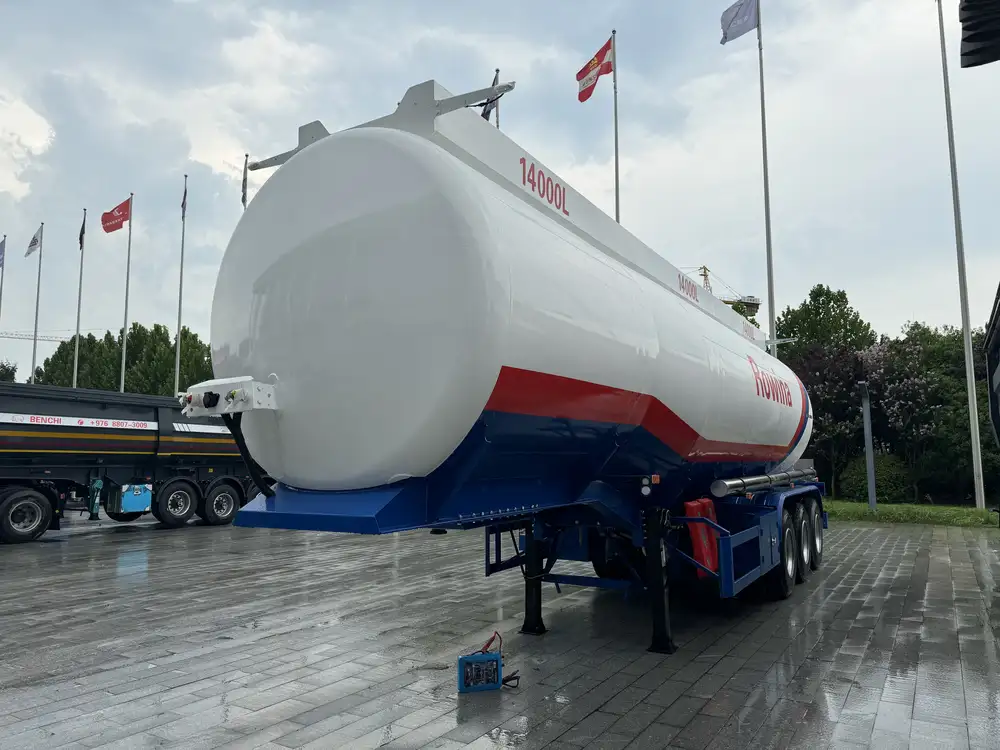When it comes to understanding the specifications of semi-trailers, a critical aspect often overlooked is their height. So, how tall are semis? The answer is multifaceted, as it can greatly depend on the type of cargo, regulations, and the specific designs of the trailers themselves. Here, we delve deep into the dimensions, regulations, and implications of the height of semi-trailers.
1. Standard Height Measurements of Semi-Trailers
1.1 Typical Dimensions
To provide context, the average height of a semi-trailer typically measures between 13 feet 6 inches (4.1 meters) and 14 feet (4.27 meters). This measurement is crucial since it keeps the vehicle within the federal regulation limits established for roadways in the United States, ensuring that larger vehicles can navigate bridges and overhead signs safely.
| Trailer Type | Average Height |
|---|---|
| Standard Van Trailers | 13′ 6″ (4.1 m) |
| Flatbed Trailers | 13′ 6″ (4.1 m) |
| Refrigerated Trailers | 13′ 6″ – 14′ (4.1 – 4.27 m) |
| Step Deck Trailers | 11′ – 13′ (3.35 – 3.96 m) |
| Double Decker Trailers | 14′ – 15′ (4.27 – 4.57 m) |

1.2 Variations in Height
However, variations do exist. For instance, double-decker trailers that accommodate taller cargo can reach heights of 14 to 15 feet, while flatbed trailers may be slightly lower, with some variations according to the type of load being carried.
1.3 Low-Profile Designs
Through engineering ingenuity, low-profile designs aim to provide cargo solutions while maintaining lower heights. Commonly, these trailers feature a height that can be as low as 11 feet, providing a solution for loads that require a lower center of gravity.
2. The Influence of Trailer Types on Height
The height of semi-trailers can significantly vary based on the type of trailer being discussed. Understanding the distinction between the various types can help prospective buyers or users discern which trailer best meets their operational needs.

2.1 Flatbed Trailers
Flatbed trailers usually have a standard height of around 13 feet 6 inches. The open-top design permits flexibility in loading but may limit total height due to cargo restrictions imposed by road regulations.
2.2 Refrigerated Trailers
Refrigerated semi-trailers can also measure between 13 feet 6 inches and 14 feet, primarily depending on insulation thickness. The refrigerated unit’s equipment must also be considered, which can contribute to additional height.
2.3 Dry Van Trailers
These are the most common type of semi-trailer on the road, also adhering to the standard height of 13 feet 6 inches. They are designed for general freight transport and often include added features such as side doors for easy access.

2.4 Special Configurations
Specialized trailers, like double-decker models, play a vital role in optimizing cargo space. Regulations allow them to exceed standard height limitations, effectively catering to industries that require taller loads.
3. Regulations Surrounding Semi-Trailer Heights
3.1 Federal Regulations
The Federal Motor Carrier Safety Administration (FMCSA) enforces various height restrictions to ensure safety on the road. Typically, a maximum of 13 feet 6 inches is permitted for semi-trailers operating on highways.

3.2 State-Specific Regulations
While federal mandates set a baseline, individual states may have their unique height restrictions. For example, certain states may impose a lower maximum height for specific routes, which necessitates that operators review local regulations diligently.
3.3 Exemptions and Permits
Some oversize loads may qualify for special permits allowing transportation with heights exceeding the standard limits. Regulations regarding these permits differ, requiring carriers to plan meticulously to ensure compliance.
| State | Maximum Height | Permit Requirement |
|---|---|---|
| California | 14′ 6″ | Permit Required |
| Texas | 13′ 6″ | No Permit Required |
| New York | 13′ 6″ | Permit Required |
| Florida | 14′ | No Permit Required |
| Illinois | 13′ 6″ | Permit Required |
4. Practical Implications of Semi-Trailer Heights

4.1 Urban Accessibility
The height of semi-trailers has profound implications in urban settings where overpasses, bridges, and awnings exist. High loads may face restrictions in certain districts and municipalities, necessitating route planning.
4.2 Cargo Considerations
Optimal trailer height is not merely a specification but pivotal to the type of cargo being transported. Tall or oversized items, such as large machinery, must be evaluated against standard height restrictions to avoid potential issues.
4.3 Towing and Truck Modifications
Truck operators must also regard the truck’s height when loading a semi-trailer. Trucks outfitted with lift kits or other height modifications alter the overall vehicle’s legal height, impacting compliance with transportation laws.

5. Calculating Load Heights
Knowing how to properly calculate the height of the load and trailer combination is imperative for carriers to maintain compliance and safety. Here’s a step-by-step approach:
- Measure the Trailer Height: Begin with the height of the empty trailer.
- Assess Load Height: Measure the height of the cargo once loaded onto the trailer.
- Add Clearances: Consider additional clearances for equipment, straps, and coverings that may further elevate the load.
- Evaluate Total Height: Combine all measurements to determine the total height.
- Verify Regulations: Cross-check the total height with transportation regulations applicable for the intended route.
6. Addressing Common Questions About Semi-Trailer Height
6.1 What Causes Variations in Height?
Variations in semi-trailer heights can arise from design features aimed at accommodating different types of cargo, load-bearing capabilities, and compliance with regulatory frameworks.

6.2 How Do I Know My Load Is Within Legal Limits?
Always reference the height measurement on the truck and trailer combination after loading. Use tools such as load cells or height gauges for precision.
6.3 Can I Increase the Height of My Semi-Trailer?
While modifications can be made, increasing the height of a trailer often entails regulatory concerns. Quality inspections, safety evaluations, and compliance checks must be undertaken.
7. The Future of Semi-Trailer Heights

7.1 Advances in Design
Emerging materials and designs, including composite materials, are shaping the future of semi-trailer production. Manufacturers are now focused on creating lighter yet more durable options that could impact overall height and performance.
7.2 Sustainability Initiatives
Height specifications could also embrace sustainability as a determining factor, pushing manufacturers toward designs that minimize environmental impact while maximizing operational efficiency.
7.3 Compliance Technology
With advancements in technology, we anticipate the emergence of systems that can track and monitor trailer heights in real-time, facilitating compliance with regulatory specifications automatically.

Conclusion
In conclusion, understanding “how tall are semis” is not merely answering a straightforward measurement but involves a tapestry of regulations, logistical considerations, and safety implications that intertwine to impact the transportation industry. Whether you are a manufacturer, a logistics provider, or a freighter, comprehending the nuances of trailer heights is integral to operational success and adherence to the law. Embracing this understanding not only enhances your workflow but also promotes safer transporting practices, ultimately fostering a more efficient transportation ecosystem.
By staying well-informed about the height specifications of semi-trailers and their associated regulations, you will position yourself for success in navigating the complex logistics landscape.



